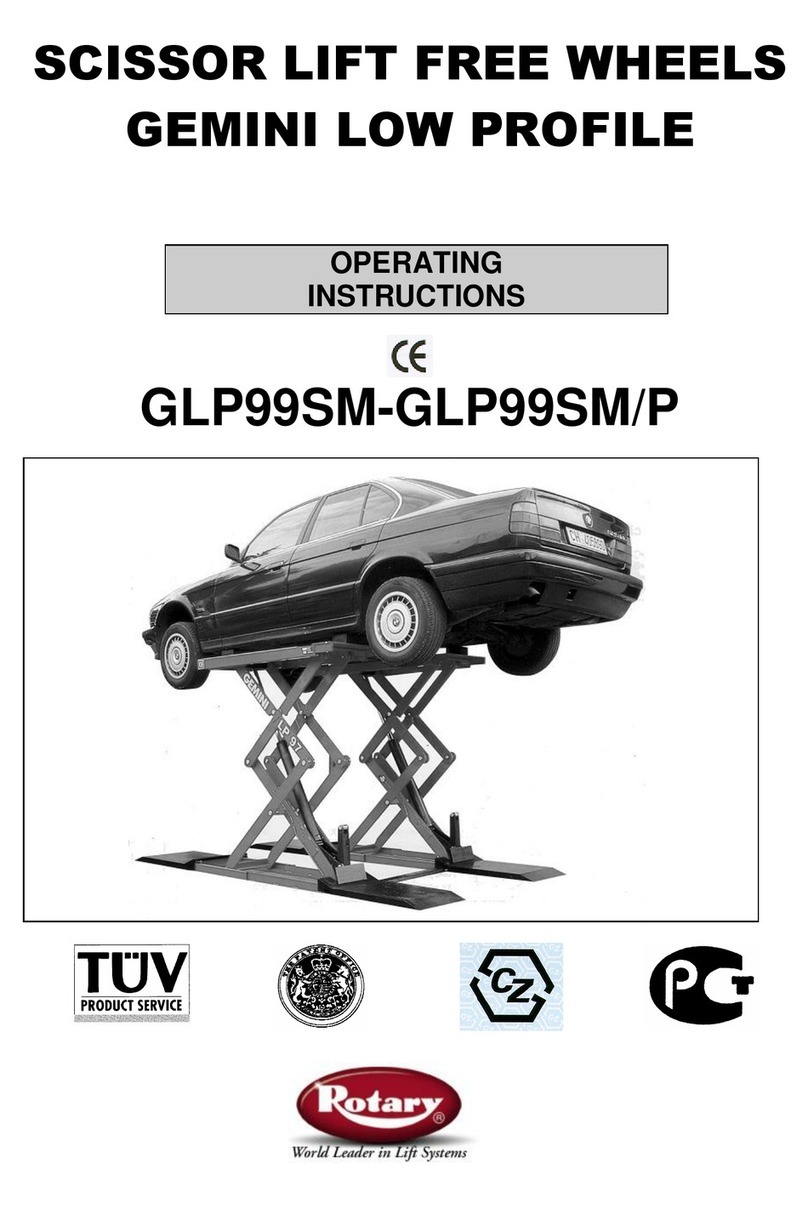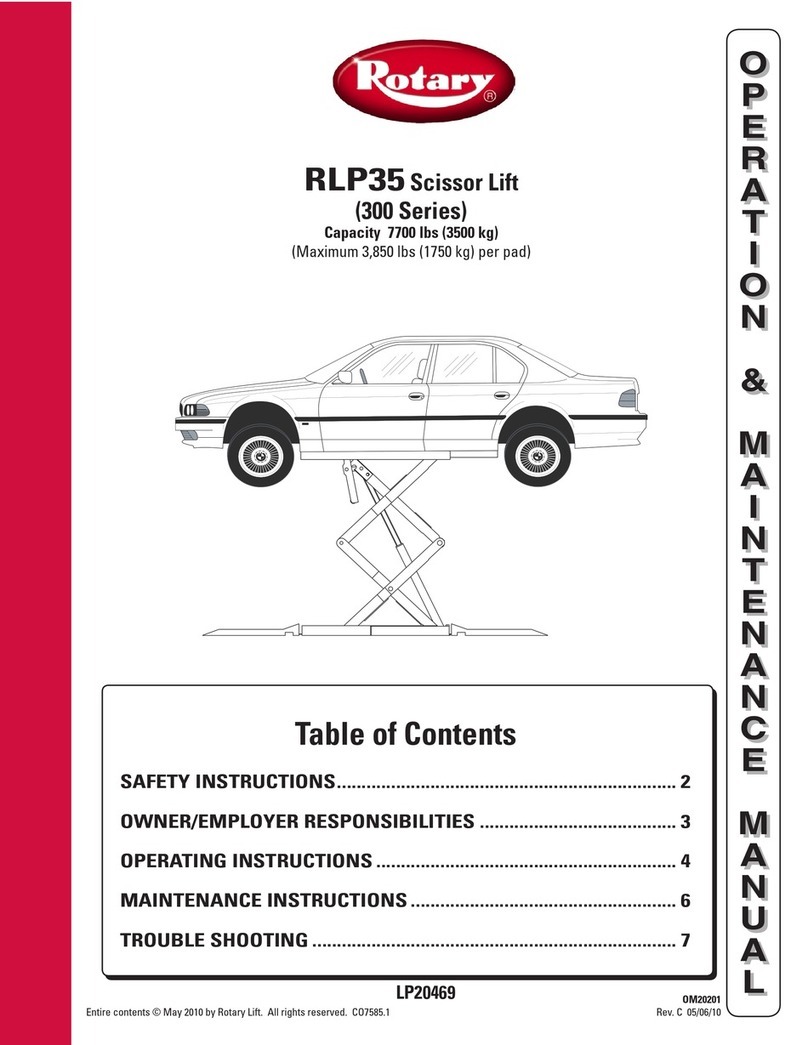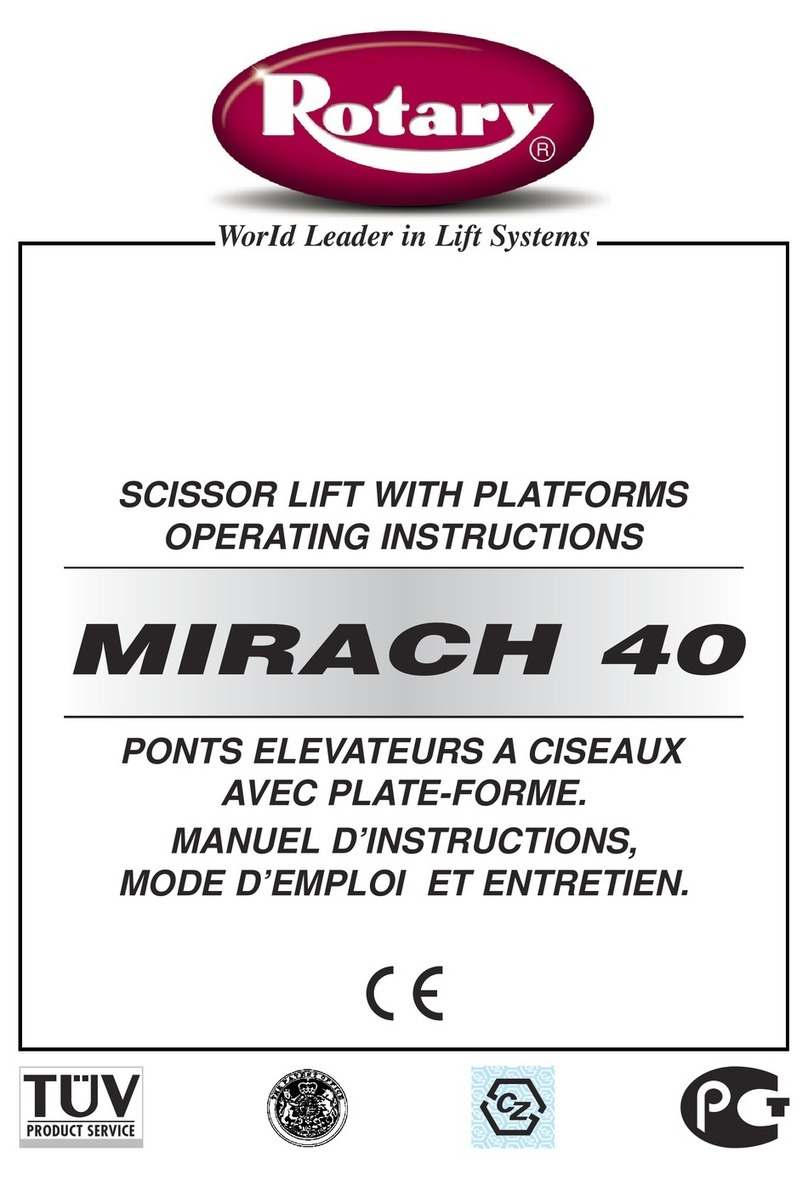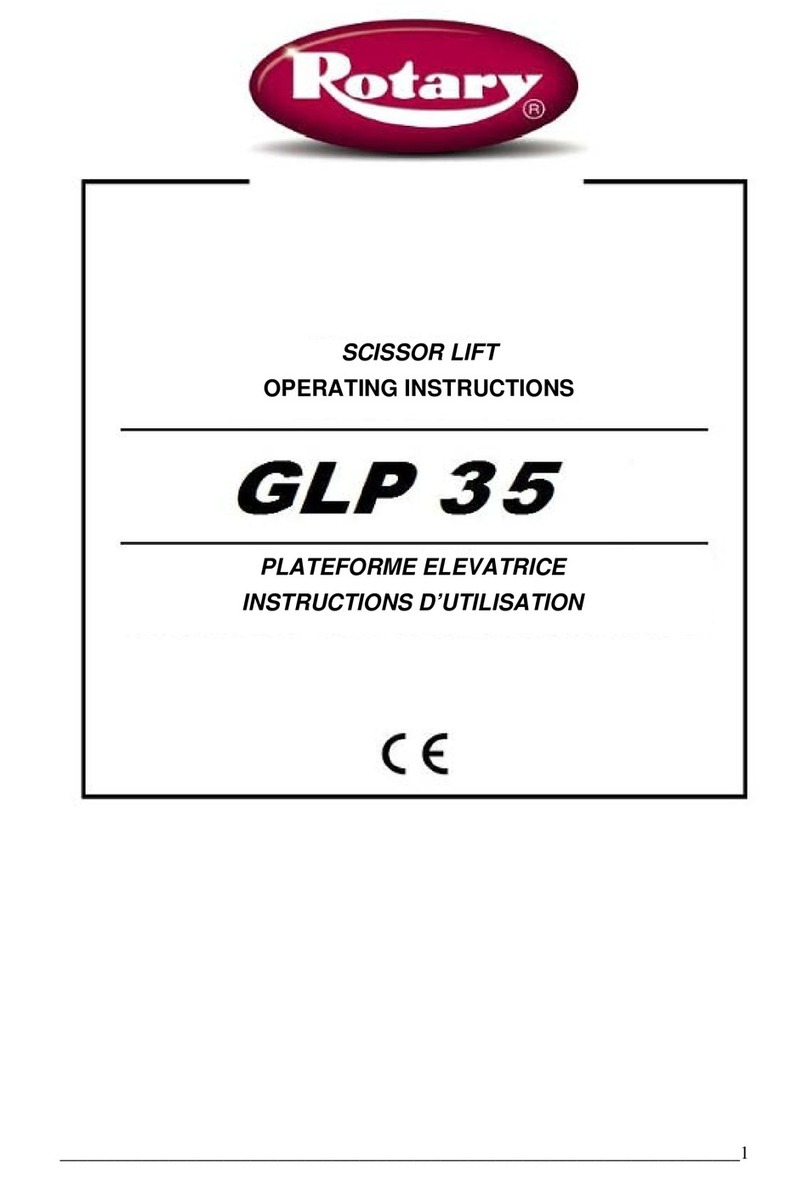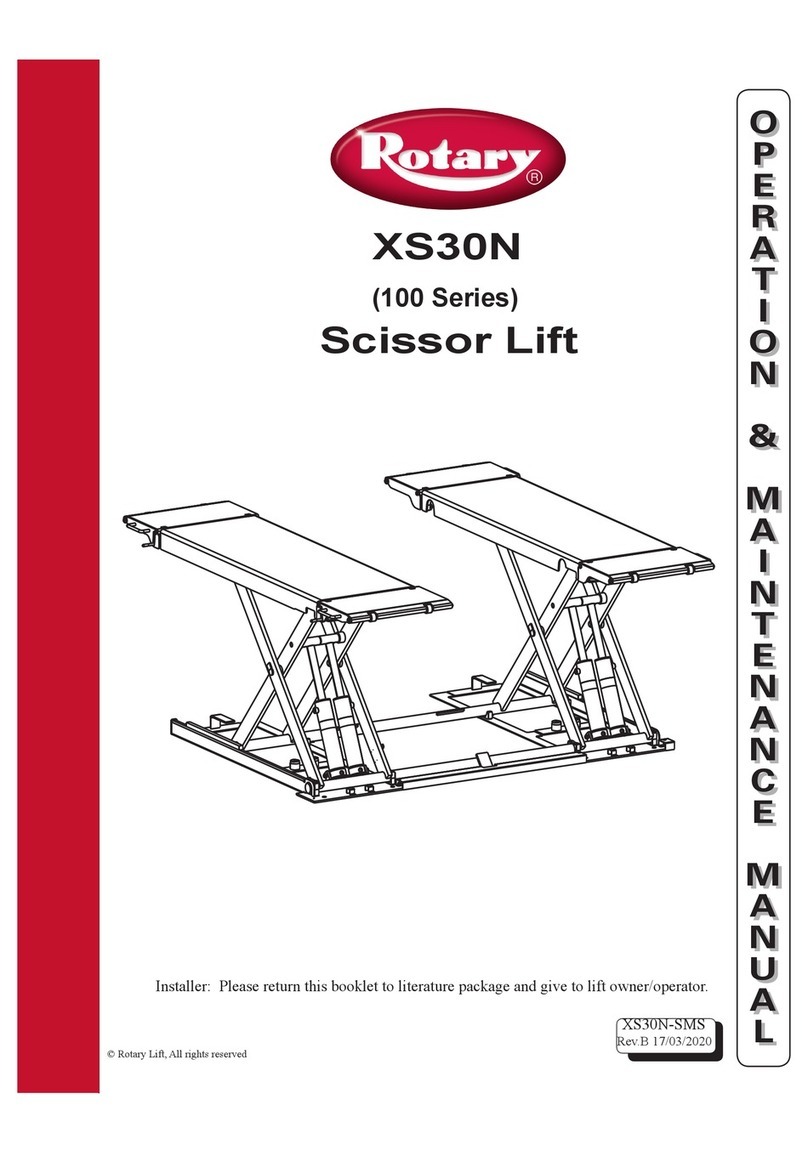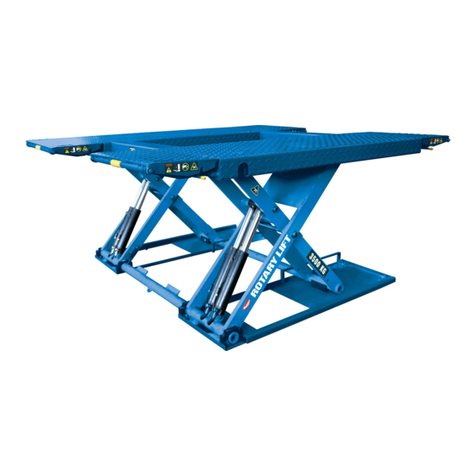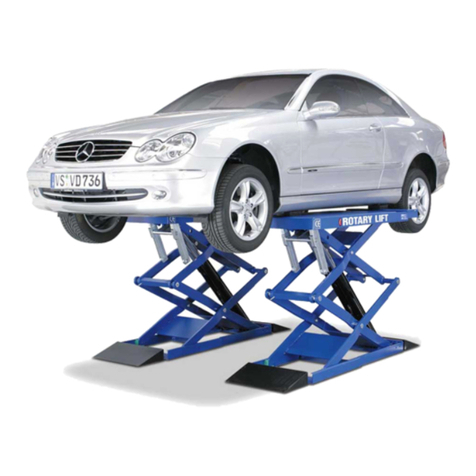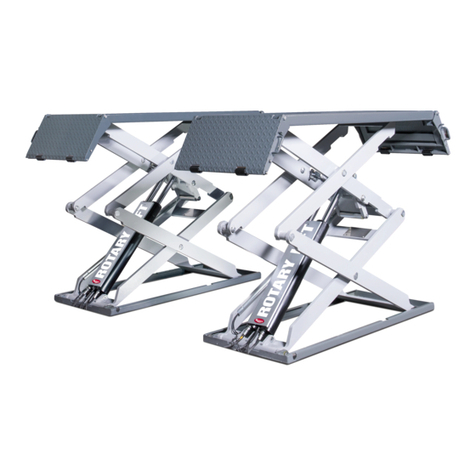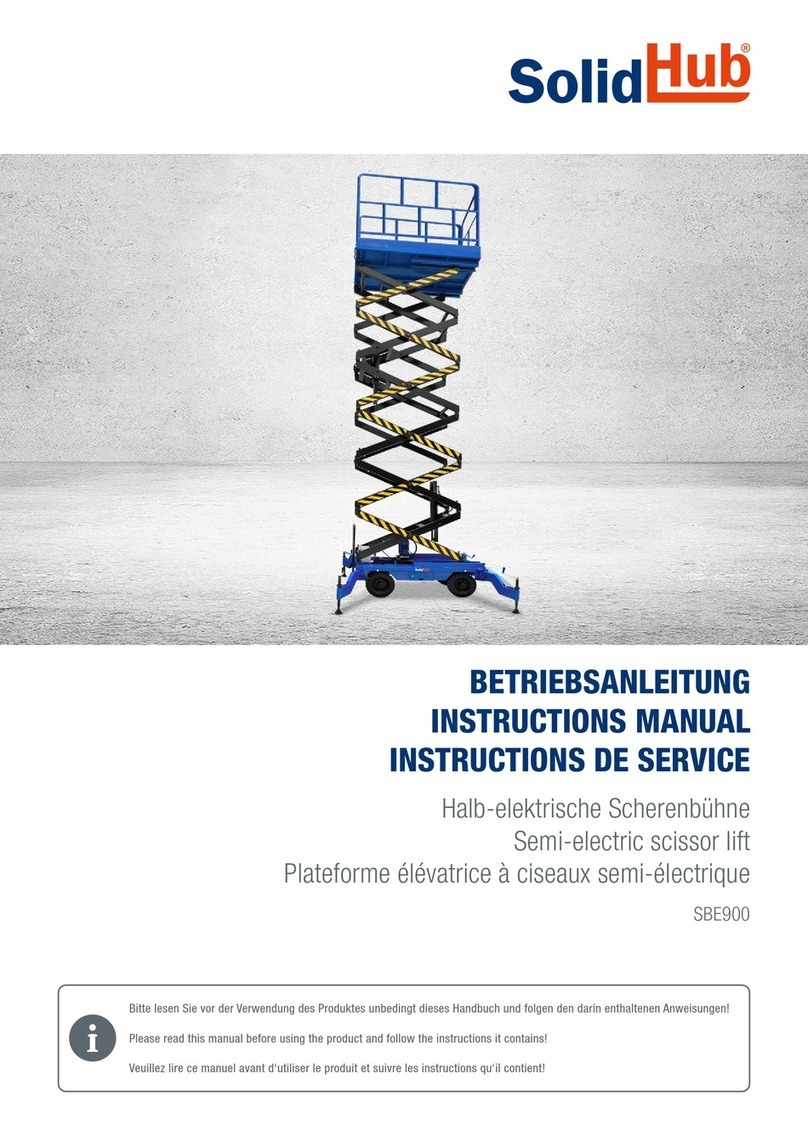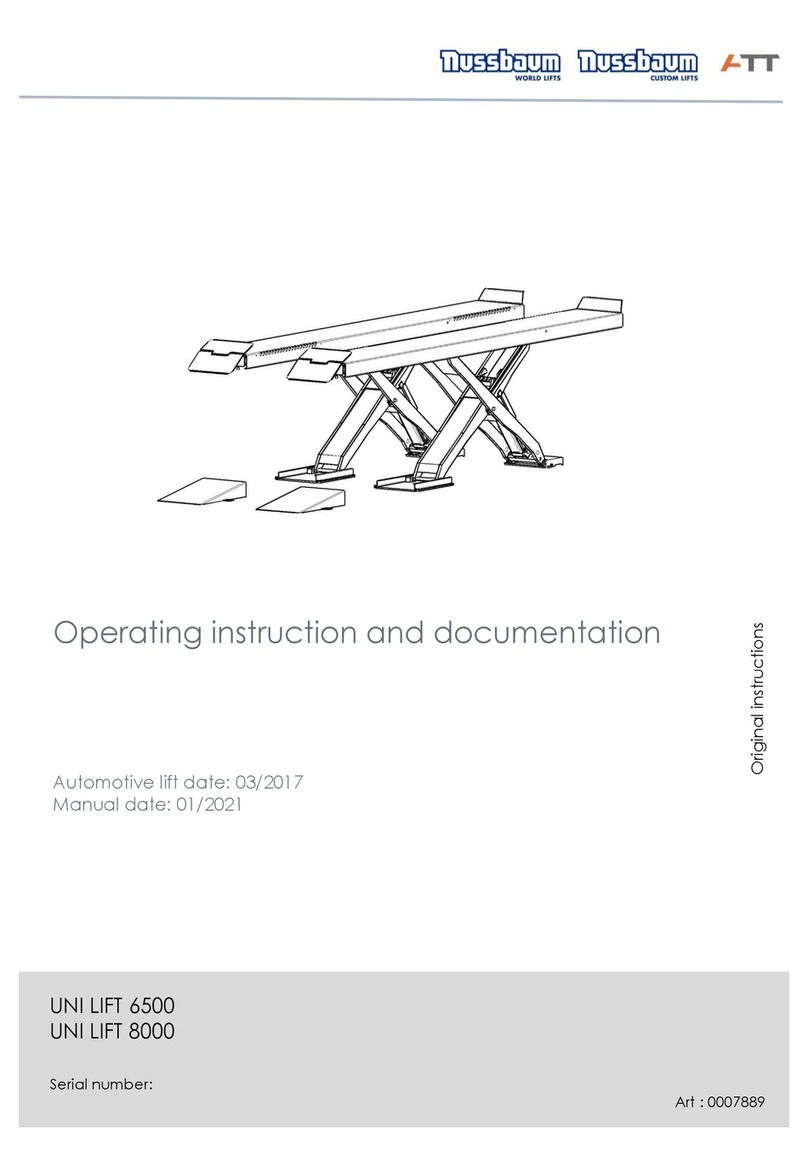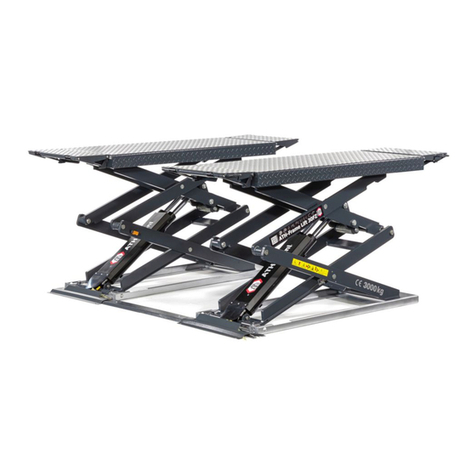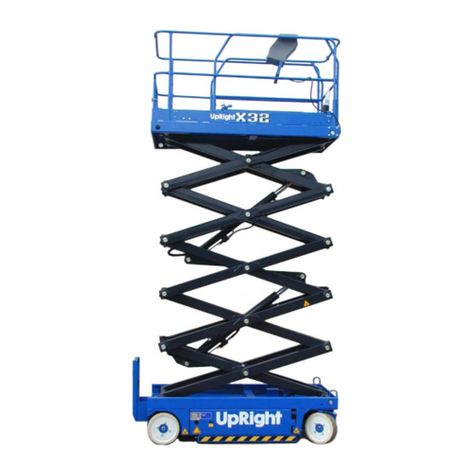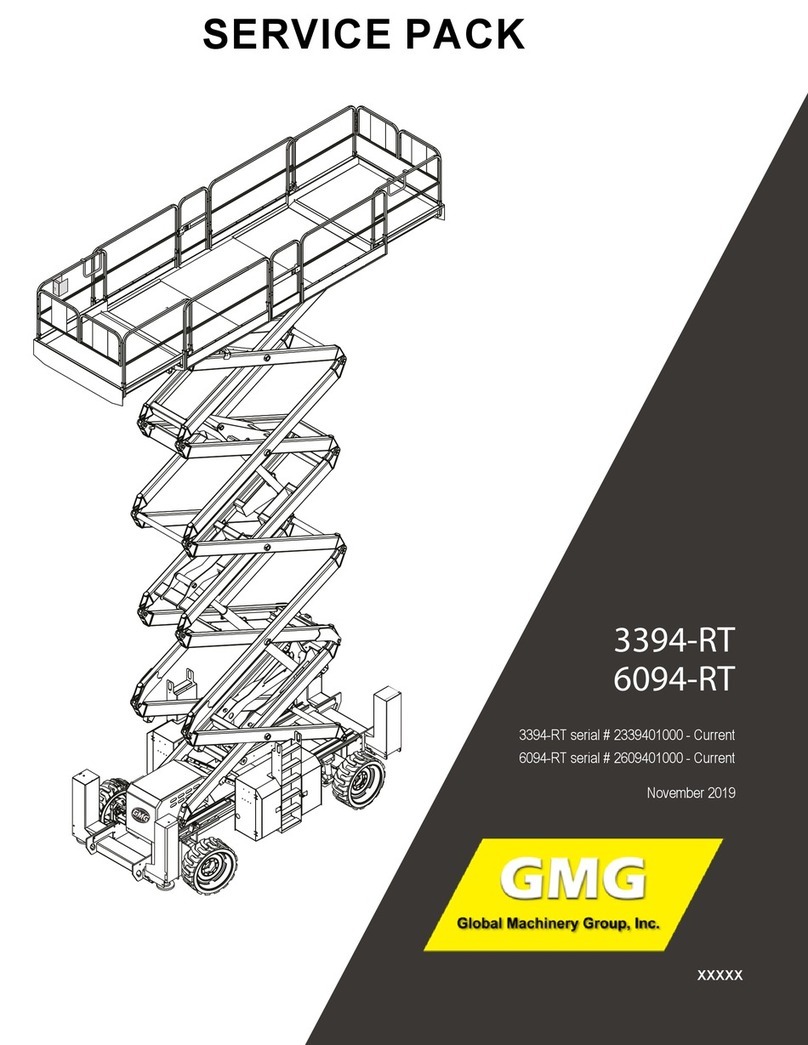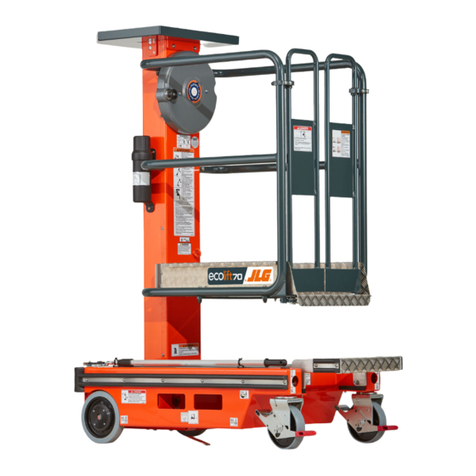
EC Declaration of Conformity
according to EU machine directive 2006/42/EG (Annex II A)
Name and address of manufacturer: BlitzRotary GmbH
Hüfinger Str.55
78199 Bräunlingen,
Germany
This declaration only relates to the machine in condition as supplied; components added and/or subsequent
modifications made by the end user are disregarded. This declaration becomes invalid if the product is
changed or modified without permission.
We declare that the undermentioned machine,
Product name: SCISSOR LIFT
Serial / type name: M 50, ML 40, ML 50
Machine/serial number: .............................................................
Year of manufacture: 20…
complies with all relevant provisions or the machine directive 2006/42/EG.
In addition the machine complies with the provisions of the directives 2004/108/EG electro-magnetic compat-
ibility (safety objectives were complied with according to Annex I, no. 1.5.1 machine directive 2006/42/EG).
Applied harmonized standards:
EN 1493:1998+A1:2008 Vehicle lifts
EN ISO 12100-1 : 2003 Safety of machinery –Basic concepts
EN ISO 12100-2 : 2003 Safety of machinery –Basic concepts
EN 60204-1:2006+7/2007 Electrical equipment of machines
EN 349:1993+A1:2008 Safety of machinery –Minimum gaps
EN ISO 13850:2008 Safety of machinery –Emergency stop
Other applied technical standards and specifications:
BGG 945 Inspections of lifts
BGR 500 Operation of work equipment
BGV A3 Accident prevention regulation electric equipment and production equipment
EU prototype examination no.: D 06 AA3887101
EU notified body No. 0124 , DEKRA certification
Representative for the compilation of relevant technical documentation
BlitzRotary GmbH, Hüfinger Str. 55, 78199 Bräunlingen
Place, date
Bräunlingen, 20.03.2013 ___________________________
Frank Scherer / Managing Director
